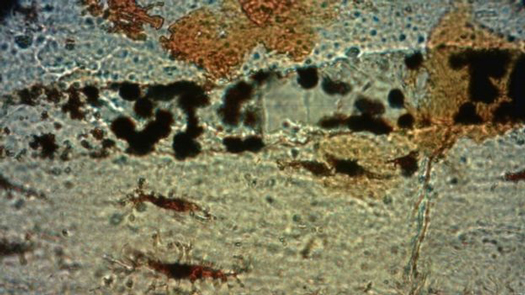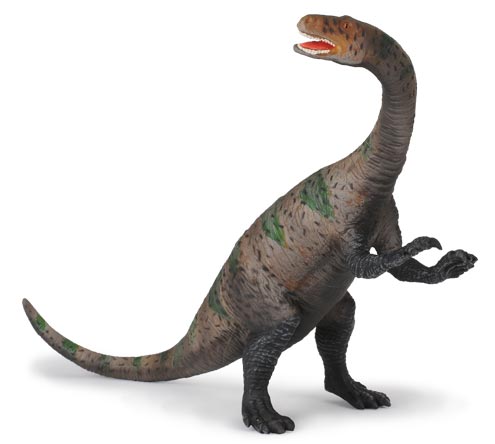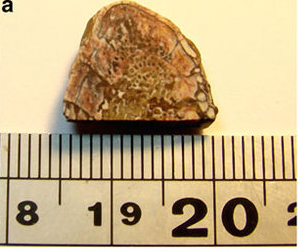Evidence of Preserved Collagen in the Early Jurassic Dinosaur Lufengosaurus
Just days after writing about a scientific paper published in the academic publication “The Journal of Proteome Research”, which confirmed the presence of collagen in the fossilised bones of an 80-million-year-old duck-billed dinosaur, then a second paper comes along reporting evidence of preserved collagen in a much older dinosaur, a Lufengosaurus, a herbivore that roamed Asia back in the Early Jurassic.
Studying the Rib Bone of a Lufengosaurus
Lufengosaurus – a Sauropodomorph from the Early Jurassic
Picture credit: Everything Dinosaur
The picture (above) shows a replica of Lufengosaurus from the CollectA Prehistoric Life range.
To view this range: CollectA Age of Dinosaurs Popular Prehistoric Life Models.
Preserved Proteins
Writing in the journal “Nature Communications”, researchers from the National Central University of Taiwan, the National Synchrotron Radiation Research Centre (Taiwan) and in collaboration with palaeontologist Robert Reisz (Dept. of Biology, University of Toronto Mississauga, Ontario, Canada) report on the discovery of protein preservation in a terrestrial vertebrate found inside the vascular canals of a rib of a 195-million-year-old sauropodomorph dinosaur, where blood vessels and nerves would normally have been present in the living reptile.
The Lufengosaurus Rib Bone that was Used in the Research
Picture credit: Nature Communications
Evidence of Organic Traces
Evidence of peptides and amino acids have been found before in dinosaur bones, even evidence of dinosaur blood and red blood cells, although a lot of this research remains controversial. What is significant about this study, is that the vast majority of the organic traces found within the Dinosauria fossil record relate to bones of animals that lived during the Late Cretaceous. In this new paper, the scientists report evidence of proteins that make up collagen in a fossil rib bone from a dinosaur that lived some 195 million years ago.
Palaeontologist Dr Robert Reisz, heralded the significance of this research, which used a synchrotron to analyse the mineral content of a cross-section of rib bone, he stated:
“We hope to be able to learn more about the biology of these animals and the more we know about their soft tissues the more we will know about them overall. We are actually looking at the preservation of the original materials that were in the living organism rather than an impression of the soft tissues that were there.”
Blood from a Lufengosaurus?
The synchrotron permitted the team to examine the infrared spectroscopy of tiny fragments of the rib bone. Signatures of proteins typical of collagen were picked up along with iron-rich proteins found within the walls of microscopic blood vessels located deep with the rib (specimen number CXPM Z4644).
A Highly-magnified Section of the Rib Showing a Vascular Canal with Potential Dinosaur Blood Remnants

Rib section with vascular canal associated with dark iron rich particles that probably constitute preserved elements of dinosaur blood.
Picture credit: Dr Reisz (University of Toronto Mississauga)
The image above shows a rib section with vascular canal associated with dark iron rich particles (haematite) that probably constitute preserved elements of dinosaur blood.
To read Everything Dinosaur’s recently published article about duck-billed dinosaur collagen: Researchers Confirm Duck-billed Dinosaur Collagen.
This new study may not represent the oldest traces of reptile proteins found in the fossilised remains of Mesozoic creatures. In 2016, Everything Dinosaur reported on evidence of blood vessels and proteins having been identified within the fossilised bones of some Triassic marine reptiles, to read about this: Spectroscopic Studies on Organic Matter from Triassic Reptiles.
The scientific paper detailing the Lufengosaurus research: “Evidence of preserved collagen in an Early Jurassic sauropodomorph dinosaur revealed by synchrotron FTIR microspectroscopy”, published in the journal “Nature Communications”.
Visit the website of Everything Dinosaur: Everything Dinosaur.








Leave A Comment